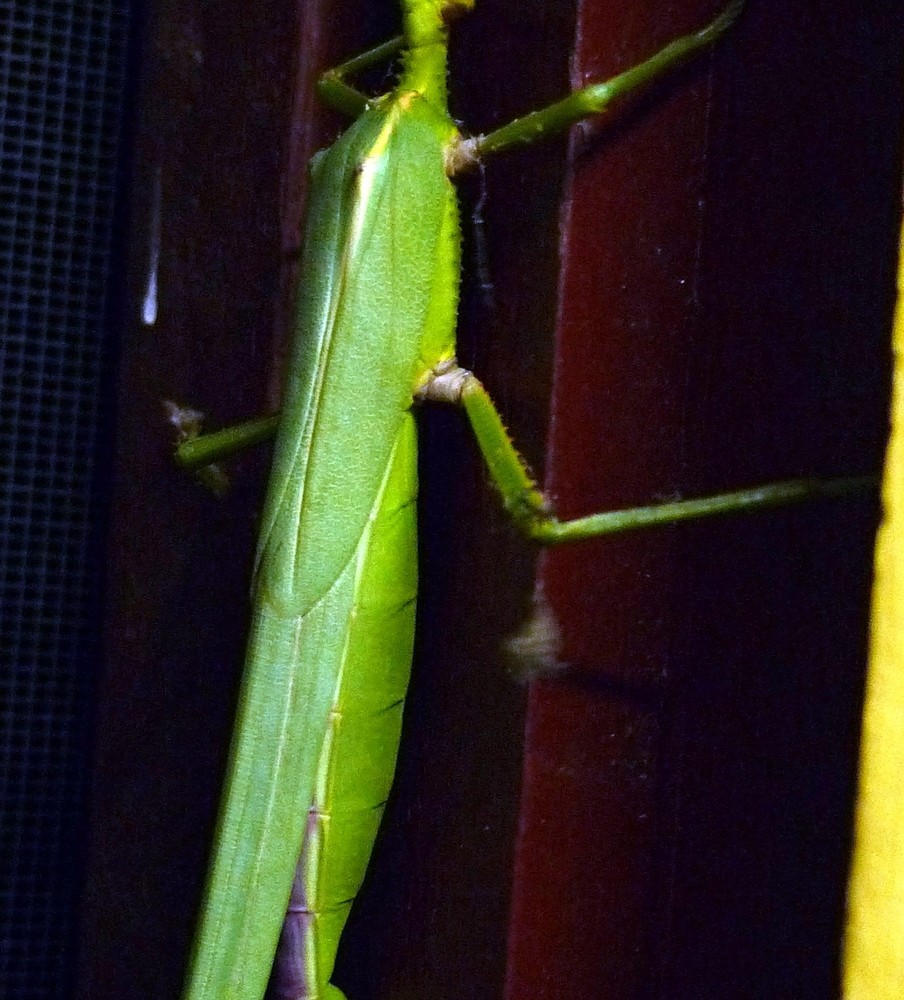Unarmed stick insect
(Acanthoxyla inermis)

Description
Acanthoxyla inermis (the unarmed stick insect) is an insect that was described by John Tenison Salmon 1955. Acanthoxyla inermis is included in the genus Acanthoxyla, and family Phasmatidae. No subspecies are listed. This species is native to New Zealand but has been unintentionally moved to Great Britain where it has grown a stable population and is the longest insect observed, and the most common of the stick insects that have established themselves on the island. A. inermis has a long thin body and three pairs of thin jointed limbs resembling twigs. The species has been observed as having many superficial differences in appearance among individuals: The body colour and texture is varied and is many shades green, brown or yellow. Adult members of this species can grow to 10 cm long. The bodies of this genus are sometimes covered in spines while other specimens have perfectly smooth bodies and others still have a series of tubercles. As members of the family Phasmidea, A. inermis grows by incomplete metamorphosis; it grows by a series of moults. Generally a stick insect will moult between five and ten times between hatching from the egg and mature adulthood. The life of a stick insect consists of four stages: Adults lay their ova (eggs) either by dropping them to the ground or depositing them within a suitable substrate. The ova are often hardy so they can withstand falling from height and the cold winter conditions they are often exposed to. The length of the egg stage can vary from as little as two weeks to over 18 months. After hatching from their eggs, nymphs quickly move to find a suitable vegetation that they can scale in order to find food in the form of leaves and the safety of the environment they are so well camouflaged for. Nymphs go through a series of moults before maturing to an adults which allows them to grow in the absence of their hard exoskeleton and also regenerate limbs that may have lost through a process called autotomy. Nymphs will generally eat their shed skin after a moult. Sub-adult stage refers to the final moult before being a true adult of its species. This is a short part of the life cycle and the last before the insect reaches the stage of reproduction. The adult stage of a stick insect generally lasts six months to a year, during this period the animal's life is devoted to feeding and reproduction. A. inermis spends most of its life on trees, eating leaves in relative safety.
Taxonomic tree:







